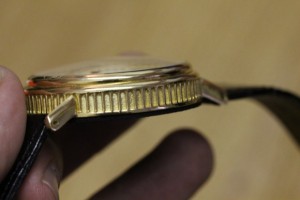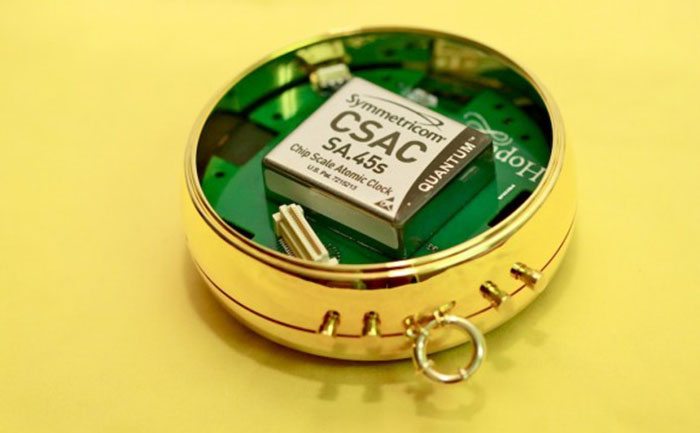An Atomic Clock is a device that “measures time through a frequency standard based on an electronic transition frequency in the microwave, optical or ultraviolet of the electromagnetic spectrum of atoms.” Although this is pretty much how Wikipedia explains it, what we (who lack a degree in physics) do understand is that this is what makes them the most accurate time and frequency standards known. Just last January the JILA Laboratory at the University of Colorado Boulder made the news for building an atomic clock that could keep perfect time for 5 billion years, outlasting even the end of the our world.

It is practically a maker’s dream but the best part is that its heart is the SA.45s CSAC, a device created by Symmetricom. It is an atomic physics package with lasers to excite atoms and a microwave resonator to measure their atomic transitions. It was developed for the US Department of Defense and it is small enough (about 1 cm in height) to look like a battery.
“It keeps time with a precision that makes it good to within one and a half second every 1.000 years,” Hoptroff told website Theprodigalguide.com, which first reported the story, “this means it is the most precise watch in the world by a factor of 5,000”. You may be asking yourselves why we tell you about this on 3Dprintingindustry.com. Simple: because, although the No10 will not yet use it, Hoptroff believes that the real advanced technology he is implementing in his watchmaking activity is 3D printing, and specifically selective laser sintering of end use watch cases in gold.





